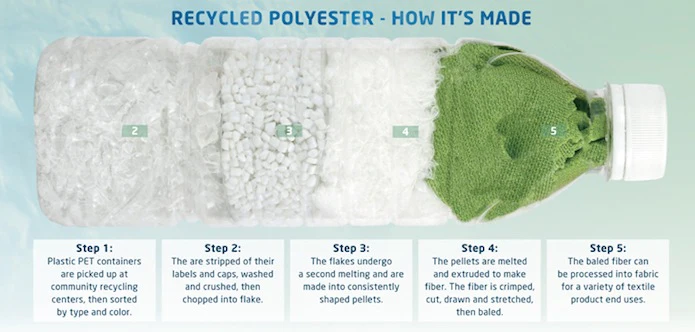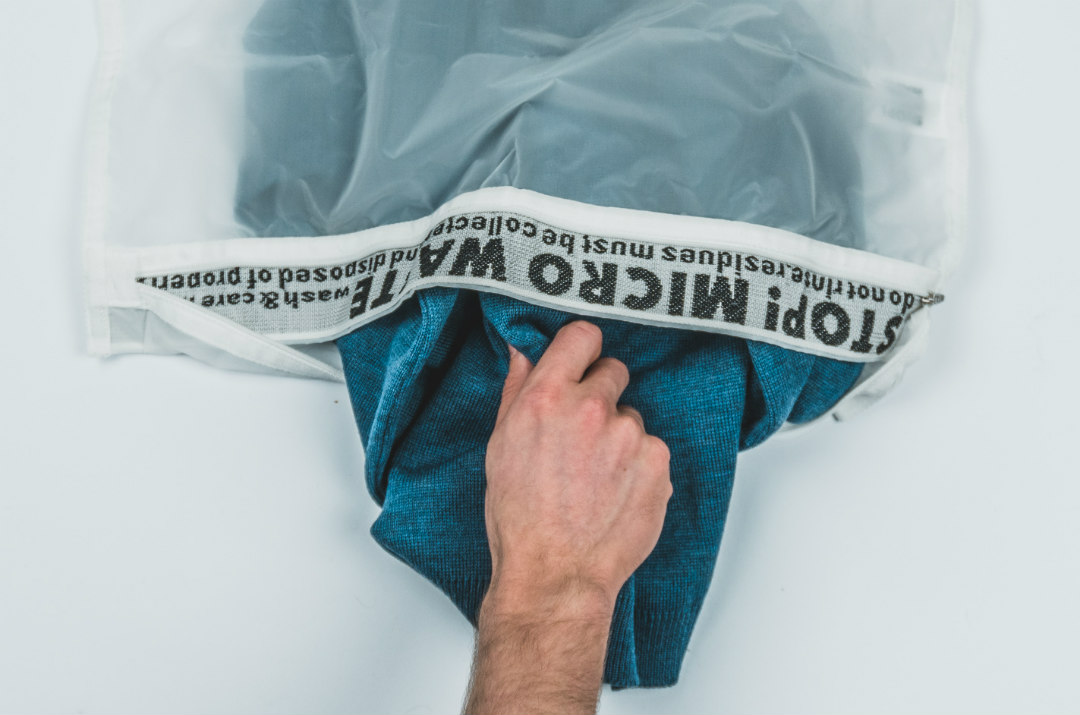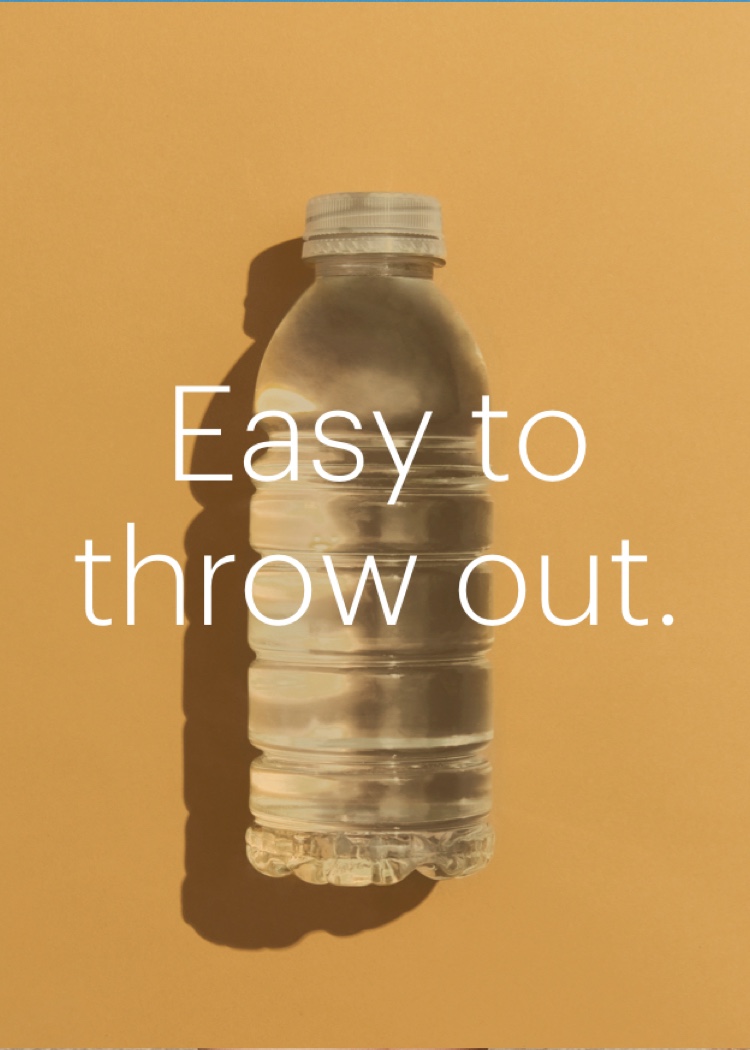Dossier
The polyester you don’t expect: on the edge of sustainability

Forget the old “plastic” fabric: today’s polyester is something else entirely. In fact, increasingly it is produced from recycled bottles, consuming less water in production, and can last much longer in your wardrobe.
Learn why the world’s most widely used synthetic fiber can be a true friend to the environment and what simple daily gestures can increase its benefits.
Polyester today: from running to recycling
You know that t-shirt that dried in a nanosecond at the end of the marathon where you had finally beaten your “personal best”? Or that down jacket so lightweight that it has no problem fitting into a “Ryanair-Friendly” backpack?
The secret is called polyester. Invented in British laboratories during World War II and launched on the market during the 1950s under the name Terylene, polyester quickly conquered fashion thanks to its strength and ease of maintenance.


Today, this amazing fiber makes up more than half of the fabrics produced in the world because it’s durable, inexpensive, and doesn’t wrinkle.
But what has changed with respect to the past?
What’s new is that much of today’s polyester comes from recycled water bottles (r-PET). The plastic fragments melt, becoming flakes, then thread, and finally fabric: each knit made in this way reduces petroleum extraction (well, yes, polyester, like all plastic fibers is derived from petroleum, but you already knew that, right?) and this process also cuts CO2 emissions by as much as 50 percent with respect to the “virgin” production process.


Polyester behind the scenes: less water, more efficiency
Back to sustainability.
It’s true, very true that polyester can be sustainable, but only if the manufacturing processes are advanced and “smart.”
In fact, in traditional finishing, garments are immersed in tanks filled with boiling water and dyes. State-of-the art technologies, such as Tonello’s patented UP system, reduce water use by more than half, collecting and reusing the heat produced and fixing the color on the first attempt. Sensors and software control energy and chemical consumption, all in real time, and with a speed that was unimaginable only a few years ago.
Polyester and daily actions: this is where you come in
Small gestures, multiplied by millions of people, really do make a difference.
This is proof that sustainability doesn’t just live in research and development labs, but more importantly, in your closet. If you’re wondering whether it’s worth changing habits for a few degrees less or an extra bag, remember that the sum of individual behaviors like the ones listed below have a huge collective impact:
- wash at 30 °C: saves electricity and limits the release of micro-fibers
- use a filter bag: it traps particles to prevent them from otherwise ending up in rivers and oceans
- air dry: fabric dries in a short time without the use of a dryer
- recycle at the end of garment life: take garments to special collection centers (even found in some “enlightened” stores) so that the threads can be reused and reborn


If just one million people adopted these four steps for 12 months, we would save about 26 GWh in electricity -over 6 million euro in utility bills- enough to satisfy the annual public lighting needs of an average Italian city like Verona, for example (estimate based on EU averages).
Polyester in action: a conceivable story
Let’s take a theoretical example and imagine an amateur runner in her thirties. We’ll call her Francesca. She runs three or four times per week, for training or for races. Two years ago she bought a recycled polyester jersey. Since then she has washed it at least sixty times: the color has remained as vibrant as the first day she bought it and she has never dried it in the dryer. Calculator in hand, Francesca has saved about 35 kWh – the equivalent of five full dishwasher cycles.
This, too, is a small-but-huge gesture that goes far beyond individual benefit, but when added to those made by other “Francescas”, assumes a great significance for the community as a whole.


Three questions and answers about polyester
Is polyester a breathable fabric?
Yes, if the fabric is micro-perforated or blended with natural fibers.
Does polyester release micro-plastics?
Yes, but release decreases with soft finishes and low temperature washes.
Can polyester be recycled indefinitely?
The quality of the thread declines with each reuse, but new enzymatic solutions promise nearly unlimited recycling.
If you want to know more...
In the Inspiring section of the Tonello website you‘ll find articles and case studies dedicated to garment finishing in all fabrics, including polyester, and solutions for reducing their environmental impacts.
On the other hand, if you are interested in understanding how Metro monitors water, energy, and CO₂ in real-time, in all laundry processes, you can explore the dedicated page on Tonello’s website.
Condividi l’articolo:




